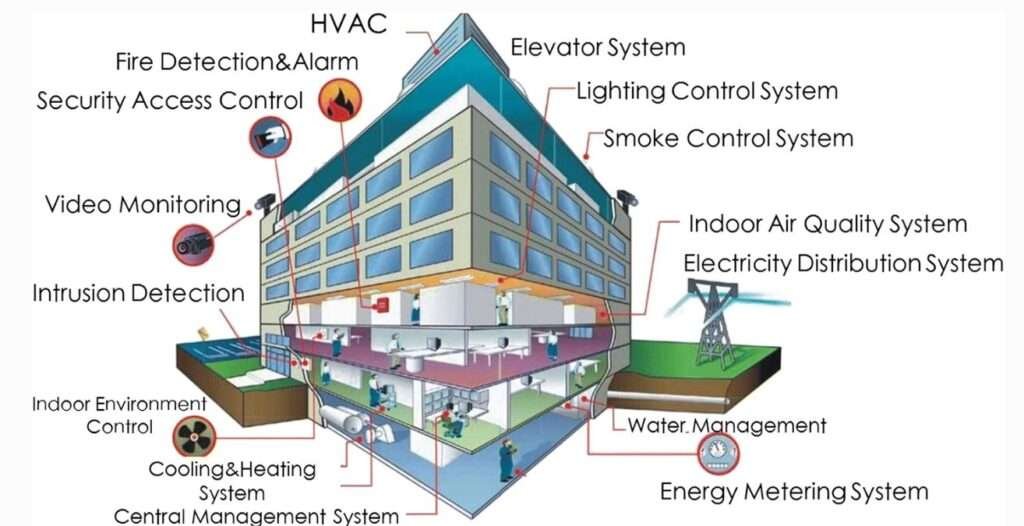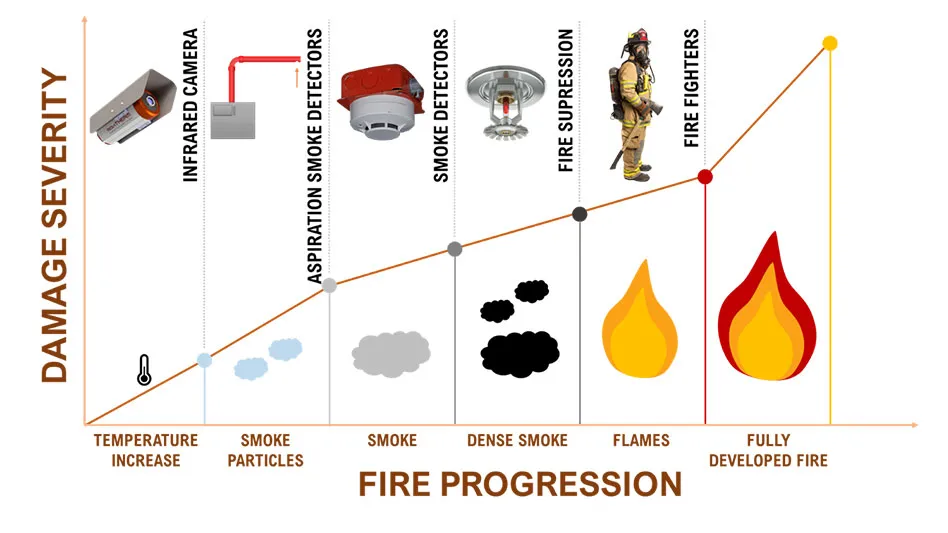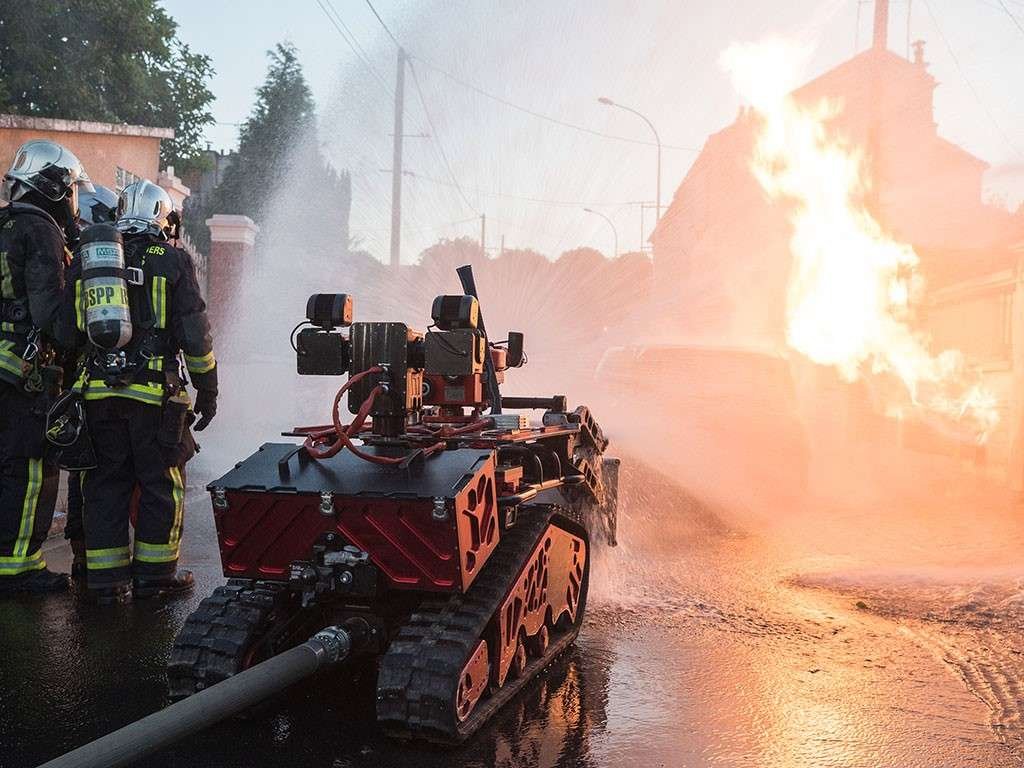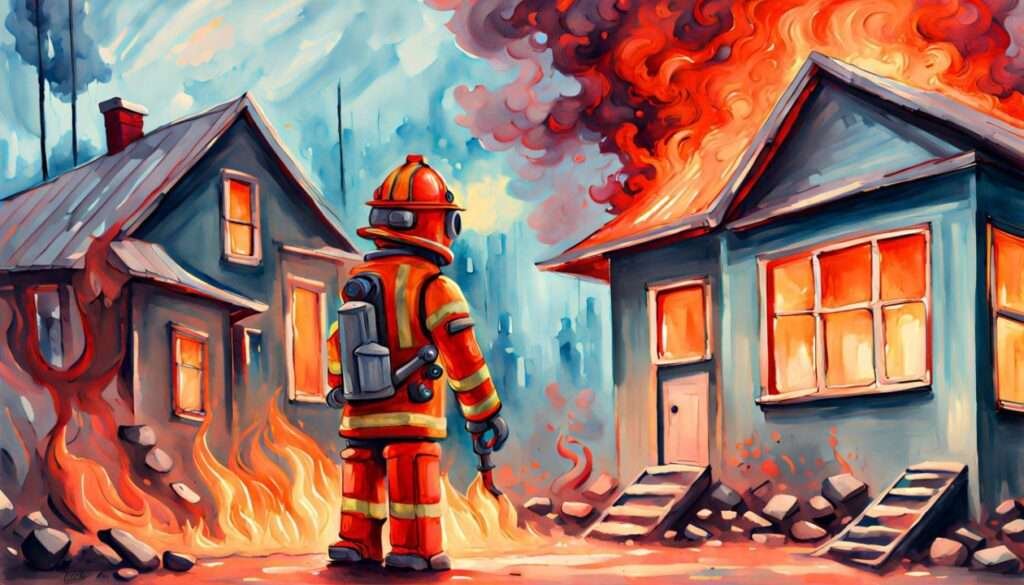The Future of Early Warning Systems: The world of fire safety is rapidly evolving, with new technologies making early warning systems smarter, faster, and more reliable than ever before. These innovations are transforming how we protect buildings and save lives. Let’s explore the exciting developments shaping the future of fire safety.
Internet of Things (IoT) Revolution in Fire Safety

The Power of Connected Devices IoT technology is revolutionizing fire safety systems. Modern detectors don’t just work alone – they’re part of an intelligent network that shares information constantly. These smart devices can tell the difference between steam from a shower and real smoke, reducing false alarms significantly. They monitor their own health, letting maintenance teams know when they need attention before they fail.
Connected sensors now track more than just smoke and heat. They measure air quality, monitor electrical systems for overheating, and even detect water leaks that could damage fire safety equipment. All this information flows to a central system, creating a complete picture of building safety.
Building managers can now use their smartphones to:
- Check the status of every detector in real-time
- Receive instant alerts about potential problems
- View detailed reports about system performance
- Control testing and maintenance schedules
- Track patterns that might indicate developing problems
The Future of Early Warning Systems in Smart Building Technology Integration
Creating Safer Environments Smart buildings are taking fire safety to new levels. Modern building management systems connect fire safety with other crucial systems:
The HVAC system automatically adjusts when smoke is detected, helping control its spread. Lighting systems guide people to the nearest safe exit using dynamic pathways that change based on where the danger is. Security cameras help firefighters see conditions inside before entering, while electronic access systems ensure doors unlock automatically during emergencies.
These integrated systems learn from experience. They analyze data from previous incidents to improve response times and evacuation procedures. The building literally becomes smarter about protecting its occupants.

The Future of Early Warning Systems
Advancements in Detection Methods
Beyond Traditional Sensors New detection technologies are changing how we spot fires before they become dangerous:
Video Fire Detection Advanced cameras now use artificial intelligence to spot fires faster than traditional sensors. They can see smoke and flames across large spaces, like parking garages or lobbies, and even measure how fast a fire is spreading. These systems don’t just detect fires – they help predict where the fire might go next.
Multi-Sensor Technology Modern detectors combine multiple sensing methods in one device. They might use:
- Heat detection
- Smoke particle analysis
- Carbon monoxide monitoring
- Infrared scanning
- Air quality measurement
This combination makes them incredibly accurate at detecting real fires while ignoring harmless situations that might fool simpler detectors.

Artificial Intelligence and Machine Learning
The Smart Brain Behind Safety AI is making fire safety systems more intelligent every day. Machine learning algorithms analyze vast amounts of data to:
Predict Maintenance Needs Systems can now predict when components might fail before they actually do. This predictive maintenance keeps safety systems working reliably while reducing costs.
Improve Response Times AI helps determine the fastest evacuation routes based on real-time conditions. It can even adjust building systems automatically to protect escape paths.

Future Innovations on the Horizon
What’s Coming Next Several exciting developments are just around the corner:
Nano-Technology Sensors Tiny sensors embedded in building materials could detect problems at the molecular level, spotting chemical changes that indicate a fire risk before any smoke appears.
Drone Integration Automated drones could patrol large buildings or complexes, providing early warning of external fire risks and helping guide firefighters during emergencies.

Personal Safety Devices Wearable technology could help track people during evacuations, ensuring no one gets left behind. These devices might even provide personalized escape guidance based on someone’s location and mobility needs.
The Impact on Building Design
Changing How We Build These technological advances are influencing how architects and engineers design buildings:
- More flexible infrastructure to accommodate evolving technology
- Better integration of safety systems into building aesthetics
- Improved power and communication networks
- More emphasis on preventive safety measures
Making Technology Work for Everyone
The Human Factor As these systems become more complex, designers are focusing on making them easier to use:
- Simple, intuitive interfaces for building staff
- Clear communication systems for residents
- Easy maintenance procedures
- Reliable backup systems

Remember: While technology continues to advance, the goal remains the same – protecting lives and property. The best innovations are those that make safety systems more reliable, easier to use, and more effective at preventing tragedies before they happen.







